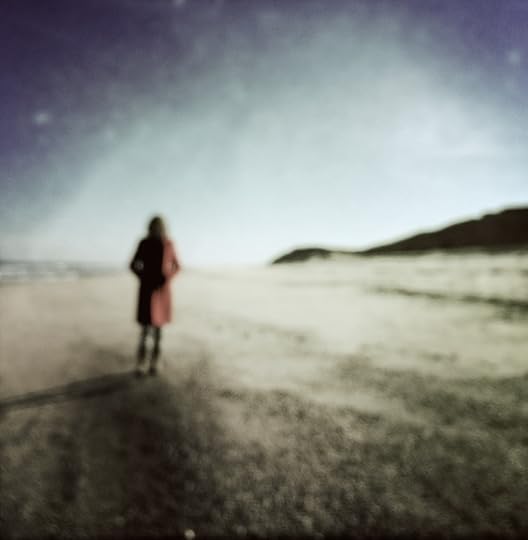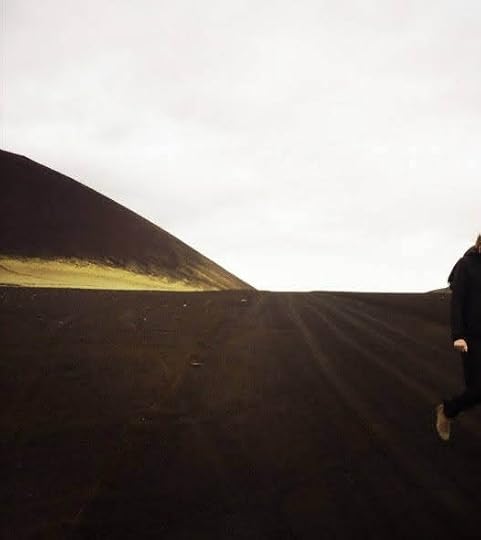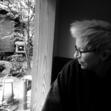wayfindrpunk—hopepunk’s reality check
 wayfindr, as in: navigator of planetary-scale waves of change, on the fly
wayfindr, as in: navigator of planetary-scale waves of change, on the fly +
punk, as in: it’s a messy churn of co-existence all the way down
In 2017, Author Alexandra Rowland coined the term “hopepunk.” She used it to describe stories and states of mind that are, as she put it, “the opposite of grimdark.” She offered hopepunk as an antidote to the multiplying bookshelves filled with dystopian, amoral, and violent stories that featured myopic, flailing characters.
“Hopepunk says that kindness and softness doesn’t equal weakness, and that in this world of brutal cynicism and nihilism, being kind is a political act. An act of rebellion.” Tumblr
As a scifi genre, hopepunk is meaningful and even be motivating—as far as it goes. But I’m not sure it goes far enough. Hopepunk isn’t quite up to the realities of the new futures pouring in right now:
In 2024, what readers are being forced to imagine as their futures, much less their actual present, spills beyond the limits of hopepunk.Hopepunk stories may lift readers out of individual and collective states of grimdark. But hope is a culture-charged human emotion. It can be, and often is, sentimentalized, monetized, co-opted by religious dogmas and political partisans.Rowland’s call for stories of resistance, rebellion, and hope makes sense in worlds that run on opposites: hope vs. despair, dark vs. light, strong vs. weak, good vs. evil, alive vs. dead, outsider vs. insider, me vs. you. But we don’t live in a world of opposites. The pathways of existence in our universe intwine all things: human+beyond human, sentient+beyond sentient, earth+cosmos, through all space-time.What happens when hopepunk isn’t grimdark enough to feel,
you know, “real” enough to be good science fiction?
Wayfindrpunk happens.
 The wayfindr in wayfindrpunk says: the pathways of being and lasting in the weave of the cosmos are always changing. All things and all life forms never stop coming together, falling apart, and recombining again, differently.The punk in wayfindrpunk says: The universe is an evolving mesh-net of messy co-existers. Messy, because when one thing falls apart and then recombines into something else—it messes with other things. Our cosmos of exquisite co-existence doesn’t play favorites. Sometimes a comet hits. Or an earthquake. Or a virus. Or a species with the capacity to be self-centered and domineering beyond its own good-enough existence.
The wayfindr in wayfindrpunk says: the pathways of being and lasting in the weave of the cosmos are always changing. All things and all life forms never stop coming together, falling apart, and recombining again, differently.The punk in wayfindrpunk says: The universe is an evolving mesh-net of messy co-existers. Messy, because when one thing falls apart and then recombines into something else—it messes with other things. Our cosmos of exquisite co-existence doesn’t play favorites. Sometimes a comet hits. Or an earthquake. Or a virus. Or a species with the capacity to be self-centered and domineering beyond its own good-enough existence.wayfindrpunk characters understand that some things, human and beyond human, get changed forever. In Solid, Broken, Changing, sometimes Kally and Stuart must carry on by navigating around what’s truly broken and no longer viable. Other times, they’re able to flow on only by plunging into torrents of grief, fear, and failure—because these are pathways of co-existence too—just as real and meaningful as are the welcome eddies of fair weather.
Uncertain and imperfect, wafindrpunk characters tap in, observe, then kluge together just enough inkling about the drift of things to be able to carry on. Carefully. Fiercely. Adjusting over and over as things, and they themselves, continue to change.
They do this not because their go-to emotion is hope. But because it’s intrepid curiosity.
Their unstoppable curiosity is also their superpower. Kally and Stuart know that the planet’s forces of careening change could very well out-scale their efforts any moment. But nothing can out-scale their curiosity.
Their survival is the survival of the fitters. Their superpower is their unbreakable eagerness to master, humbly, ways of being and lasting as co-existers. As Kally and Stuart surf increasingly choppy pathways of co-existence, they grow into impressive—if not magical—re-fitters, re-purposers, redirectors, repairers, re-inventors.
I wrote Solid, Broken, Changing because I thought scifi needed wayfinderpunk characters like Kally and Stuart. Characters who:
come to recognize when incredible beauty is also the mess; absurdity is also the logic; yielding is the strength; laughter is tears and tears, laughter,study upending new circumstances without judgment, hope, hubris, dogma, or greed,don’t try to grasp it all, but focus on reading the drift of things right at their fingertips,foster the flourishing of co-existence—if only for now, if only where they happen to be, and without savior or hero complexes.In the award-winning anime film, Weathering with You, the heroine Hina has been trying to hold back climate change at the expense of her own life. Her friend, Hodaka tells her: “You don’t have to be sunshine girl anymore. Let the world be crazy.” Hodaka goes on to tell himself: “I choose this world. I choose to live in it.”
The world he chooses is a crazy one, not just because of climate change, but because the ways of the cosmos are beyond human reason. “It always has been [crazy] and always will be,” another character tells him. Hodaka and Hina know there’s no fixing that. There’s no escaping it, either. And so, they choose to go deeper into it. They become ever more creative participants in all of the forces that compose their world—the solid, the broken, and the changing.
In the future that is now, Kally and Stuart, Hodaka and Hina, are joining forces in some alter-universe. They’re trading skills as human antennae, fitters, co-existers, shape-shifters. They are wayfindrpunks, creatively navigating what makes their lives possible in the first place: waves of crazy change across all time and space.



